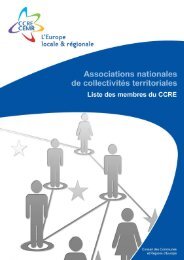The impact of demographic change on local and regional government
The impact of demographic change on local and regional government
The impact of demographic change on local and regional government
You also want an ePaper? Increase the reach of your titles
YUMPU automatically turns print PDFs into web optimized ePapers that Google loves.
1 Introducti<strong>on</strong> >2 Demographic Changes in Europe > 3 Demographic Change in Four Policy fields > 4 Summary <strong>and</strong> C<strong>on</strong>clusi<strong>on</strong>> 5 Further Inquiry <strong>and</strong> Research Questi<strong>on</strong>s > 6 <str<strong>on</strong>g>The</str<strong>on</strong>g> Council <str<strong>on</strong>g>of</str<strong>on</strong>g> European Municipalities <strong>and</strong> Regi<strong>on</strong>s in a nutshellIn July 2005, a ministerial advisory board for old age issueswas also set up. In additi<strong>on</strong> to the Nati<strong>on</strong>al Programme <str<strong>on</strong>g>of</str<strong>on</strong>g>Preparati<strong>on</strong> for Ageing, the Czech Government adopted the“Nati<strong>on</strong>al Acti<strong>on</strong> Plan <strong>on</strong> Social Inclusi<strong>on</strong> 2004-2006 (19) ”(in cooperati<strong>on</strong> with the EU Commissi<strong>on</strong>). <str<strong>on</strong>g>The</str<strong>on</strong>g> plan addressesthe problems <str<strong>on</strong>g>of</str<strong>on</strong>g> poverty <strong>and</strong> social exclusi<strong>on</strong>. It draws attenti<strong>on</strong>to the issue <str<strong>on</strong>g>of</str<strong>on</strong>g> social inclusi<strong>on</strong> in other important areaslike employment, social protecti<strong>on</strong>, health care, educati<strong>on</strong>,housing <strong>and</strong> the preventi<strong>on</strong> <str<strong>on</strong>g>of</str<strong>on</strong>g> socially negative phenomena.Demographic situati<strong>on</strong> in briefFinl<strong>and</strong><str<strong>on</strong>g>The</str<strong>on</strong>g> populati<strong>on</strong> <str<strong>on</strong>g>of</str<strong>on</strong>g> Finl<strong>and</strong> was about 5.2 milli<strong>on</strong> in 2005.<str<strong>on</strong>g>The</str<strong>on</strong>g> reproducti<strong>on</strong> rate has declined over the past 10 years from1.84 to 1.71, which is still <strong>on</strong>e <str<strong>on</strong>g>of</str<strong>on</strong>g> the highest in EU butnevertheless a growing cause <str<strong>on</strong>g>of</str<strong>on</strong>g> c<strong>on</strong>cern (Statistics Finl<strong>and</strong>2003). <str<strong>on</strong>g>The</str<strong>on</strong>g> median age is now at about 41, life expectancy isat the EU15 average <str<strong>on</strong>g>of</str<strong>on</strong>g> about 78, for males nearly 75, forfemales about 82 (20) .Finl<strong>and</strong> has always been a country <str<strong>on</strong>g>of</str<strong>on</strong>g>emigrati<strong>on</strong>, there was nearly no immigrati<strong>on</strong> until themid-1980s. Since the 1990s, immigrati<strong>on</strong> has increased.Nevertheless the proporti<strong>on</strong> <str<strong>on</strong>g>of</str<strong>on</strong>g> foreigners – 2% <str<strong>on</strong>g>of</str<strong>on</strong>g> thepopulati<strong>on</strong> – is still very small compared to other EU memberstates. <str<strong>on</strong>g>The</str<strong>on</strong>g> most important group <str<strong>on</strong>g>of</str<strong>on</strong>g> immigrants are Russians.Since 1999, Finl<strong>and</strong> has had integrati<strong>on</strong> legislati<strong>on</strong> that imposesintegrative measures <strong>on</strong> immigrants (21). <str<strong>on</strong>g>The</str<strong>on</strong>g> objective is tokeep immigrati<strong>on</strong> to a low level.In Finl<strong>and</strong> the c<strong>on</strong>trast is enormous between urban/metropolitan<strong>and</strong> rural regi<strong>on</strong>s like the Helsinki metropolitan area <strong>and</strong>the sparsely populated communities in the northern <strong>and</strong>eastern parts <str<strong>on</strong>g>of</str<strong>on</strong>g> the country. Peripheral communities strugglefor survival, facing a situati<strong>on</strong> where populati<strong>on</strong> decline hascreated financial problems for <strong>local</strong> authorities due tooversized services <strong>and</strong> tight funding. Metropolitan areas,especially suburban communities, face the opposite situati<strong>on</strong>,namely a growth in populati<strong>on</strong> resulting in a need to increasecapacity in educati<strong>on</strong>al <strong>and</strong> social services. (22)Demography-related nati<strong>on</strong>al policiesIn Finl<strong>and</strong>, as in the other Nordic countries, society traditi<strong>on</strong>ally<str<strong>on</strong>g>of</str<strong>on</strong>g>fers a variety <str<strong>on</strong>g>of</str<strong>on</strong>g> services to support children <strong>and</strong> families (23) .Many services are provided by <strong>local</strong> authorities because theyhave statutory resp<strong>on</strong>sibility for social, health <strong>and</strong> educati<strong>on</strong>alservices. According to a family barometer set up by the FinnishPopulati<strong>on</strong> League, people, who have completed their studies<strong>and</strong> have a steady job are willing to have an average 2.4children in the family. Resp<strong>on</strong>dents gave credit to the day caresystems <strong>and</strong> the housing facilities provided by society. In orderto promote the family, the relevant services are free <strong>and</strong> thusaffordable for all. This is c<strong>on</strong>sidered <strong>on</strong>e <str<strong>on</strong>g>of</str<strong>on</strong>g> the basic featuresin “Nordic welfare society”.Voluntary welfare has a l<strong>on</strong>g traditi<strong>on</strong> in Finl<strong>and</strong>, <strong>and</strong> privateorganizati<strong>on</strong>s have started many programmes that have laterbeen established as public social services, especially forchildren <strong>and</strong> families. Organizati<strong>on</strong>s still play a major role insupplementing <str<strong>on</strong>g>of</str<strong>on</strong>g>ficial welfare for minors, old people <strong>and</strong>people with disabilities. Most <str<strong>on</strong>g>of</str<strong>on</strong>g> the services provided byprivate associati<strong>on</strong>s are organized by salaried employees.Organizati<strong>on</strong>s get a reas<strong>on</strong>able proporti<strong>on</strong> <str<strong>on</strong>g>of</str<strong>on</strong>g> their fundingfrom public resources.<str<strong>on</strong>g>The</str<strong>on</strong>g> Finnish Nati<strong>on</strong>al Programme for Ageing Workers(FNPAW) is an integrated policy programme to promote theemployability <str<strong>on</strong>g>of</str<strong>on</strong>g> older workers in Western Europe. <str<strong>on</strong>g>The</str<strong>on</strong>g> maingoal <str<strong>on</strong>g>of</str<strong>on</strong>g> the FNPAW is to promote the employability <str<strong>on</strong>g>of</str<strong>on</strong>g> the over45 age group, to reduce exclusi<strong>on</strong> <strong>and</strong> premature retirement.<str<strong>on</strong>g>The</str<strong>on</strong>g> Ministry <str<strong>on</strong>g>of</str<strong>on</strong>g> Social Affairs <strong>and</strong> Health, the Ministry <str<strong>on</strong>g>of</str<strong>on</strong>g>Labour <strong>and</strong> the Ministry <str<strong>on</strong>g>of</str<strong>on</strong>g> Educati<strong>on</strong>, in cooperati<strong>on</strong> withmajor labour market organizati<strong>on</strong>s, are resp<strong>on</strong>sible for itsimplementati<strong>on</strong>. Regi<strong>on</strong>al pilot training projects areorganized, to meet the need to update skills due to advancesin informati<strong>on</strong> technology <strong>and</strong> to develop innovative methodsfor training older workers. Specific measures to preventdiscriminati<strong>on</strong> <str<strong>on</strong>g>of</str<strong>on</strong>g> older workers are also promoted. (24)(19) Ministry <str<strong>on</strong>g>of</str<strong>on</strong>g> Labour <strong>and</strong> Social Affairs, Nati<strong>on</strong>al Acti<strong>on</strong> Plan <strong>on</strong> Social Inclusi<strong>on</strong> 2004-2006, Czech Republic, 2004 (http://europa.eu.int/comm/employment_social/soc-prot/soc-incl/nap_incl_2004_cz_en_versi<strong>on</strong>.pdf).(20) <str<strong>on</strong>g>The</str<strong>on</strong>g> World Factbook, Czech Republic (http://www.cia.gov/cia/publicati<strong>on</strong>s/factbook/geos/ez.html#People).(21) Bundeszentrale für politische Bildung, Länderpr<str<strong>on</strong>g>of</str<strong>on</strong>g>il Finnl<strong>and</strong> (http://www.migrati<strong>on</strong>-info.de/migrati<strong>on</strong>_und_bevoelkerung/artikel/030804.htm).(22) S<strong>and</strong>berg, Siv, Local <strong>government</strong> in Finl<strong>and</strong>, (Åbo Akademi University, Finl<strong>and</strong>), p. 27 (http://www.abo.fi/fak/esf/lindman/<str<strong>on</strong>g>of</str<strong>on</strong>g>fentlig_forvaltning/word/Local%20<strong>government</strong>%20in%20Finl<strong>and</strong>%20-%20Siv%20S<strong>and</strong>berg.doc).(23) Taskinen, Sirpa, General M<strong>on</strong>itoring Report 2004 Finl<strong>and</strong>, Families in Finl<strong>and</strong>: Policies, challenges <strong>and</strong> opportunities (http://www.europa.eu.int/comm/employment_social/eoss/downloads/gm_04_Finl<strong>and</strong>.pdf).(24) Ministry <str<strong>on</strong>g>of</str<strong>on</strong>g> Labour & Institute <str<strong>on</strong>g>of</str<strong>on</strong>g> Occupati<strong>on</strong>al Health, Ageing workers <strong>and</strong> changing working life, Helsinki, 1999.(25) <str<strong>on</strong>g>The</str<strong>on</strong>g> "middle variant" is based <strong>on</strong> the following assumpti<strong>on</strong>s: c<strong>on</strong>stant birth rate <str<strong>on</strong>g>of</str<strong>on</strong>g> an average 1.4 children per woman, increase in the life expectancy <str<strong>on</strong>g>of</str<strong>on</strong>g> a new-born boy to 81.1 years <strong>and</strong> <str<strong>on</strong>g>of</str<strong>on</strong>g> a new-born girlto 86.6 years by 2050, <strong>and</strong> an annual net immigrati<strong>on</strong> <str<strong>on</strong>g>of</str<strong>on</strong>g> about 200,000 pers<strong>on</strong>s.



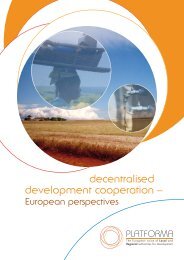
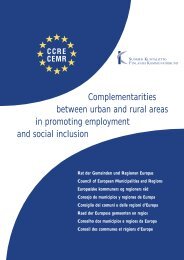

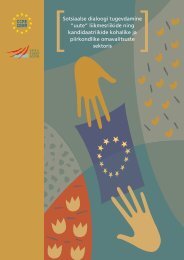





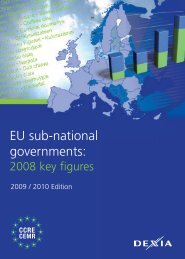

![[ ] Les jumelages pour le monde de demain](https://img.yumpu.com/29721946/1/190x96/-les-jumelages-pour-le-monde-de-demain.jpg?quality=85)

